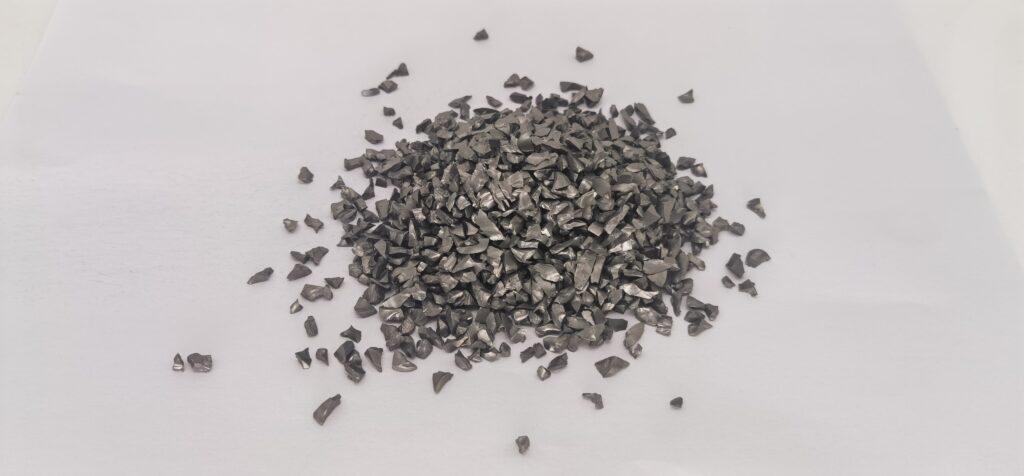Cemented carbide is made by powder metallurgy using the powder of one or several refractory carbides (tungsten carbide, titanium carbide, etc.) as the main component, adding metal powder (cobalt, nickel, etc.) as a binder. alloy. It is mainly used to manufacture high-speed cutting tools and cutting tools for hard and tough materials, as well as to make cold work molds, measuring tools and highly wear-resistant parts that are not affected by impact or vibration.
Characteristics of cemented carbide

⑴High hardness, wear resistance and red hardness
The hardness of cemented carbide at room temperature can reach 86~93HRA, which is equivalent to 69~81HRC. It can maintain high hardness at 900~1000℃ and has excellent wear resistance. Compared with high-speed tool steel, the cutting speed can be 4 to 7 times higher, the service life is 5 to 80 times longer, and it can cut hard materials with a hardness of up to 50HRC.
⑵High strength and elastic modulus
The compressive strength of cemented carbide is as high as 6000MPa, and the elastic modulus is (4~7)×105MPa, both of which are higher than high-speed steel. However, its bending strength is low, generally 1000~3000MPa.
⑶Good corrosion resistance and oxidation resistance
Generally, it has good resistance to atmospheric, acid, alkali and other corrosion, and is not easy to oxidize.
⑷Small linear expansion coefficient
When working, the shape and size are stable.
⑸The formed products will no longer be processed or reground.
Due to the high hardness and brittleness of cemented carbide, no cutting or regrinding is required after powder metallurgy forming and sintering. When special reprocessing is required, only electrical machining such as EDM, wire cutting, electrolytic grinding or special grinding wheels can be used. cut. Products of certain specifications usually made of cemented carbide are used on the cutter body or mold body by brazing, bonding or mechanical clamping.
Commonly used carbide
Commonly used cemented carbides are divided into three categories according to their composition and performance characteristics: tungsten-cobalt, tungsten-titanium-cobalt, and tungsten-titanium-tantalum (niobium). The most widely used cemented carbides in production are tungsten-cobalt and tungsten-titanium-cobalt.
⑴Tungsten-Cobalt Carbide
The main components are tungsten carbide (WC) and cobalt. The brand name is represented by the code YG (the prefix of the Chinese pinyin of "hard" and "cobalt"), followed by the percentage value of the cobalt content. For example, YG6 represents a tungsten-cobalt cemented carbide with a cobalt content of 6%, and the tungsten carbide content wWC=1-wCo=94%.
⑵Tungsten titanium cobalt carbide
The main components are tungsten carbide (WC), titanium carbide (TiC) and cobalt. The brand name is represented by the code YT (the Chinese pinyin prefix of "hard" and "titanium"), followed by the percentage value of titanium carbide content. For example, YT15 represents a tungsten-titanium-cobalt cemented carbide with titanium carbide content wTiC = 15%.
⑶Tungsten titanium tantalum (niobium) carbide
This type of cemented carbide is also called universal cemented carbide or universal cemented carbide. Its main components are tungsten carbide (WC), titanium carbide (TiC), tantalum carbide (TaC) or niobium carbide (NbC) and cobalt. The brand name is represented by the code YW (the Chinese pinyin prefix of "hard" and "wan") followed by an ordinal number.
Applications of cemented carbide
⑴Tool material
Carbide is the most widely used tool material and can be used to make turning tools, milling cutters, planers, drill bits, etc. Among them, tungsten-cobalt carbide is suitable for short chip processing of ferrous metals and non-ferrous metals and processing of non-metallic materials, such as cast iron, cast brass, bakelite, etc.; tungsten-titanium-cobalt carbide is suitable for long-chip processing of ferrous metals such as steel. Chip processing. Among similar alloys, those with more cobalt content are suitable for rough machining, while those with less cobalt content are suitable for finishing. The processing life of general-purpose carbide for difficult-to-machine materials such as stainless steel is much longer than that of other carbide.
⑵Mold material
Carbide is mainly used as cold drawing dies, cold punching dies, cold extrusion dies, cold pier dies and other cold work dies.
⑶ Measuring tools and wear-resistant parts
Carbide is used for wear-resistant surface inlays and parts of measuring tools, grinder precision bearings, centerless grinder guide plates and guide rods, lathe tops and other wear-resistant parts.





